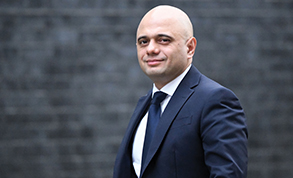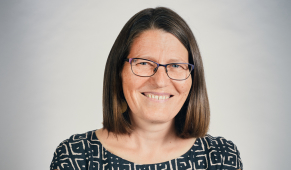Covid-19 reader: 12 November
Covid-19’s dramatic global impact
Organisation for Economic Co-operation and Development, report
 An increase in deaths, a reduction in life expectancy and a more than doubling in the prevalence of key mental health issues – these have been the major impacts of the Covid-19 across countries within the Organisation for Economic Co-operation and Development.
An increase in deaths, a reduction in life expectancy and a more than doubling in the prevalence of key mental health issues – these have been the major impacts of the Covid-19 across countries within the Organisation for Economic Co-operation and Development.
According to the OECD’s Health at a glance 2021 report, the coronavirus contributed to a 16% increase in the expected number of deaths in 2020 and the first half of 2021 across member countries. Life expectancy fell in 24 of 30 countries with comparable data, with particularly large drops in the United States (1.6 years) and Spain (1.5 years). And the prevalence of anxiety and depression was more than double the level seen pre-crisis in most countries – with Mexico, the UK and the US standing out most.
The pandemic also hit non-Covid health services, with breast cancer screening across all countries falling by an average of five percentage points in 2020 compared to 2019. The number of days on a waiting list for hip replacement increased by a median 58 days and 88 days for knee replacement.
The report also highlights a sharp increase in health spending – from 8.8% of GDP on average to 9.7%. In the UK, spending increased from 10.2% in 2019 to 12.8% in 2020. Inpatient and outpatient services continue to make up the bulk of health spending, typically accounting for 60% of overall expenditure. Workforce shortages are also a common characteristic across OECD countries, with the lack of health and long-term care staff ‘more of a binding constraint’ than hospital beds and equipment.
In a specific focus on the UK, the report highlighted the country’s 9.1 million Covid infections and over 140,000 deaths from the virus by the beginning of November. Life expectancy fell by one year to 80.4 years in 2020, compared to the OECD average reduction of 0.6 years. The UK also remains slightly ahead of other countries in terms of vaccination, with 67% of its population fully vaccinated compared to an average 62% across the OECD on average. However, while the UK had the fifth highest vaccination rate across 37 countries at the beginning of July, this had fallen to 17th highest by the start of November.
Veena Raleigh, senior fellow at The King’s Fund, said the UK was not alone in experiencing a devastating death toll with an unequal impact across different communities and a backlog of care due to disrupted services. ‘However, while the impact of the pandemic is still playing out, so far the UK compares poorly with other advanced nations,’ she said. ‘Although health spending rose sharply in response to the pandemic, historically spending in the UK on healthcare services, staffing and infrastructure has been lower than in many comparable countries. As a result, the NHS is further on the back foot than most advanced health systems in coping with the pandemic’s legacy.’
Vaccines mandated for health and care staff
Department of Health and Social Care, response to consultation
With the deadline for mandatory Covid-19 vaccination of care home staff passing on Thursday, the government this week announced that vaccination will also be a requirement for all frontline NHS and wider social care staff, unless they are exempt.
Almost 90% of NHS staff are already double jabbed, while this figure falls to 75% for domiciliary care workers in social care. However the national figures hide regional variations, with some NHS trusts reporting just 80% uptake of a second dose. The Department of Health and Social Care said that latest figures suggest that more than 103,000 NHS trust workers and 105,000 domiciliary care workers have not been reported as fully vaccinated.
The broader requirement will come into force in the spring, subject to the passage of regulations through Parliament. There will be a 12-week grace period between the regulations being made and coming into force to allow anyone currently unvaccinated to receive both doses.
An impact statement, issued alongside the decision, said there was significant uncertainty around the change in staff’s willingness to be vaccinated as a result of the policy’s introduction, but it accepts that the impact on workforce levels could be significant. While it uses slightly different figures for the numbers currently unvaccinated, it suggests that more than 100,000 could remain unvaccinated across the NHS and social care (based on mid-point estimates).
The government, which consulted on the issue, said there was a long-standing precedent for vaccination in NHS roles. Surgeons, for example, are vaccinated against hepatitis B. ‘Vaccines save lives and patient safety is paramount,’ said health and social care secretary Sajid Javid (pictured). ‘Many of the people being treated in hospitals or cared for at home are the most vulnerable to Covid-19. We have a responsibility to give patients and staff the best possible protection.’
NHS Providers had given the mandatory vaccination proposals ‘slight support’ when it responded to the consultation. However, it also raised a number of concerns, particularly around the timing of any requirement and its potential to worsen staffing pressures. This week it welcomed the fact that implementation would be delayed until the spring, when the busy winter period has passed.
‘Had the policy been introduced any sooner, we would have risked worsening the NHS's current workforce shortages at a time when the health service is already under huge operational pressure,’ said NHS Providers chief executive Chris Hopson. ‘This could have posed a risk to the quality of care we were able to provide. Delaying implementation will help ensure that trusts can maximise their efforts to increase voluntary take up efforts among their staff.’
However, some remain opposed to the policy. Chartered Society of Physiotherapy chief executive Karen Middleton said the body was pro-vaccination but ‘strongly opposed’ to making it mandatory. ‘We believe all healthcare professionals should get vaccinated, if appropriate, but we also believe we need greater engagement with those who are hesitant to understand their position and see what can be done,’ she said. ‘We are also concerned that this decision may create a sense of false security among staff that has an impact on the use of PPE and other protective measures.'
Law firm Bevan Brittan has published answers to a set of frequently asked questions about the proposals covering who is in scope, who is exempt and next steps for organisations.
Major rise in deaths at home
Office for National Statistics, statistics
Deaths in private homes increased by 33% compared with the five-year average from 2015 to 2019, according to data from the Office for National Statistics. The same pattern can be seen in provisional data for January to June of 2021, again with a 33% increase compared with the same five-year average.
While the number of deaths in private homes has generally been increasing since 2005, the leap was particularly big in 2020 – some 30% higher than in 2019. Unlike hospitals, care homes and other settings, the main cause of death has not been Covid-19. Instead, there have been substantial increases in people dying from heart disease, dementia and Alzheimer’s, and various cancers.
Sarah Caul, head of mortality analysis at the ONS, said the pandemic appeared to have had an indirect effect on private home deaths. ‘This could be because of a combination of factors, which may include health service disruption, people choosing to stay away from healthcare settings or terminally ill people staying at home rather than being admitted to other settings for end-of-life care,’ she said.
In fact, private homes were the only setting where deaths were consistently above the five-year average (2015 to 2019) in all months from January 2020 to June 2021. Excess deaths in hospitals spiked in April 2020 and again, to a lesser extent, between the following November and February. In other months, hospital deaths were below the five-year average. There was a similar pattern in care homes.
The numbers of deaths in private homes remained above average even when deaths involving coronavirus were removed.
Of the nearly 167,000 deaths in private homes in 2020, 92,000 were male. The majority of age groups also exhibited more deaths than the five-year average. This was particularly the case for those aged 80 years or older, with 21,390 excess deaths – 52% of the total excess deaths in private homes.
Overall in 2020, Covid-19 was the leading cause of death with nearly 74,000 deaths. But only 4.4% (3,221) occurred in private homes. Alongside this relatively low number of deaths involving Covid, there was a 17% increase in deaths due to ischaemic heart diseases, again compared to the five-year average. While this was the leading cause of death in private homes, dementia and Alzheimer’s accounted for the largest proportional increase in 2020 – 73% and 61% above the five-year average.
Nuffield Trust deputy director of research Sarah Scobie (pictured) said the direct causes of the increase in private home deaths were not clear and further research is needed. ‘If this trend is set to stay and more people are choosing to die or be cared for at home, then it represents a significant shift in demand for health care,’ she said, ‘and more focus will be needed to ensure families, patients and carers at home have the right support.’
Related content
We are excited to bring you a fun packed Eastern Branch Conference in 2025 over three days.
This event is for those that will benefit from an overview of costing in the NHS or those new to costing and will cover why we cost and the processes.